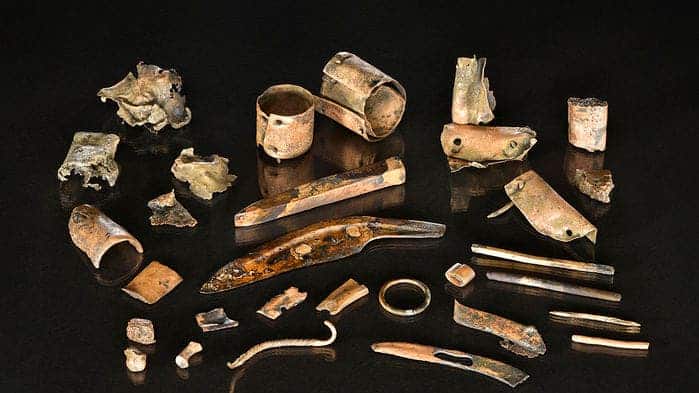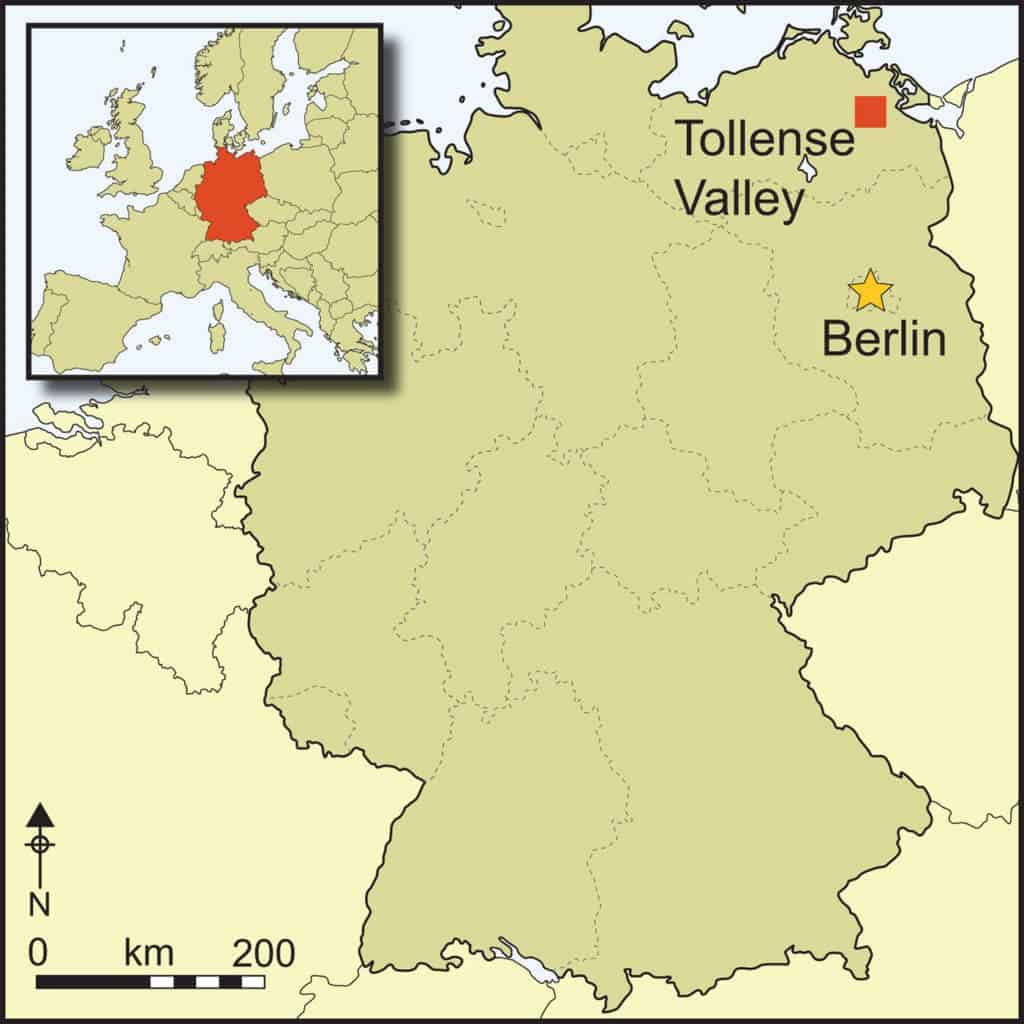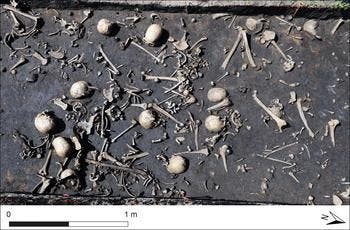
More than 3,000 years ago, in a swampy valley relatively close to Berlin, Germany, thousands of warriors clashed in an epic battle. Archaeologists know that such a grand battle happened from the countless metal scraps, woody remains, and nearly 12,000 pieces of bones found there, which sank to the bottom of the Tollense River to be preserved for millennia.
Archaeologists discovered the site of the Bronze Age battlefield in the Tollense Valley more than a decade ago. However, it has been only recently that they were able to describe an assemblage of 31 objects retrieved by divers from the bottom of the river. Among the objects, researchers identified three bronze cylinders that may be the fastenings of an organic container, along with a bronze knife, awl, and a small chisel.

“Most of the individuals represent young adult males in good physical condition. The unusual age and sex profiles, combined with evidence for trauma on some bones indicating the use of close- and long-range weapons, support the hypothesis that the remains are those of combat victims. Furthermore, evidence for a number of healed traumatic lesions may suggest that these individuals were trained for, and accustomed to, fighting,” the researchers wrote in the journal Antiquity.
Within a few meters of the bronze objects, divers discovered other artifacts from the battle, including dress pins, a knife with a bone handle, and arrowheads. Bits of preserved wood from the awl were used to date the artifacts to about 1300 B.C.E.

Thomas Terberger, an archaeologist with the Lower Saxony State Office for Cultural Heritage in Hanover and lead author of the new study, says that this tool kit likely belonged to a warrior who died on the battlefield.
The tools were likely held in a small bag or wooden container that has since decayed. Luckily, the thick mud of the riverbed preserved the artifacts in pristine condition.
“The battlefield site at the Tollense River is very different: no formal burials and no traces of settlement are present in the valley. The many bronze finds suggest that offerings took place in the valley during period III, most probably connected to post-battle rituals. It is also probable, however, that some of the battle participants lost personal equipment in the river, saving it from the looting that inevitably followed the battle,” the researchers wrote.
A previous analysis found that some bones retrieved from the Bronze Age battlefield had different strontium content than those found in people raised in the region. In the new study, the researchers claim that the warrior who owned the toolkit probably originated from southern Central Europe.
Taken together, these findings suggest that 3,000 years ago, warriors in Europe were traveling from hundreds of kilometers away to join battles, which is evidence of social organization at a grand scale during a time when there were no means of modern communication nor roads.
“This conflict should be interpreted in the framework of the social and economic development that characterised Central Europe in the thirteenth-century cal BC.,” the researchers concluded.
The findings appeared in the journal Antiquity.









